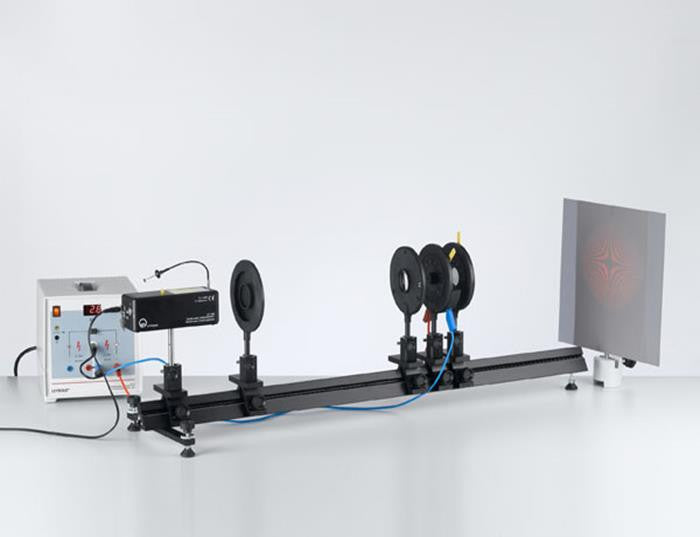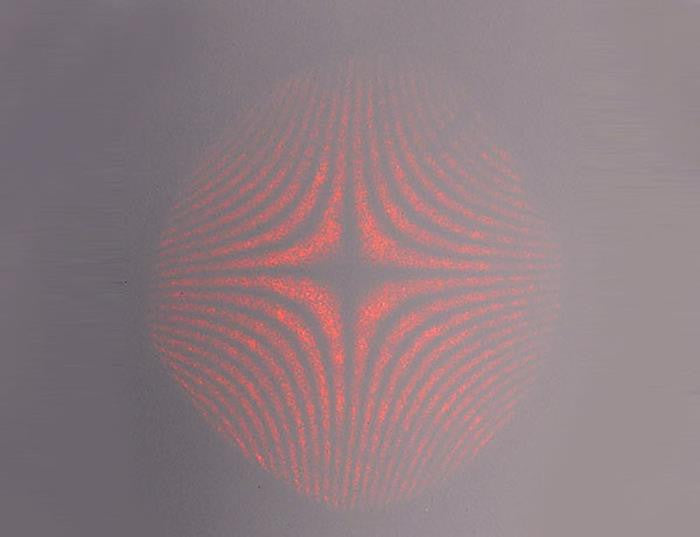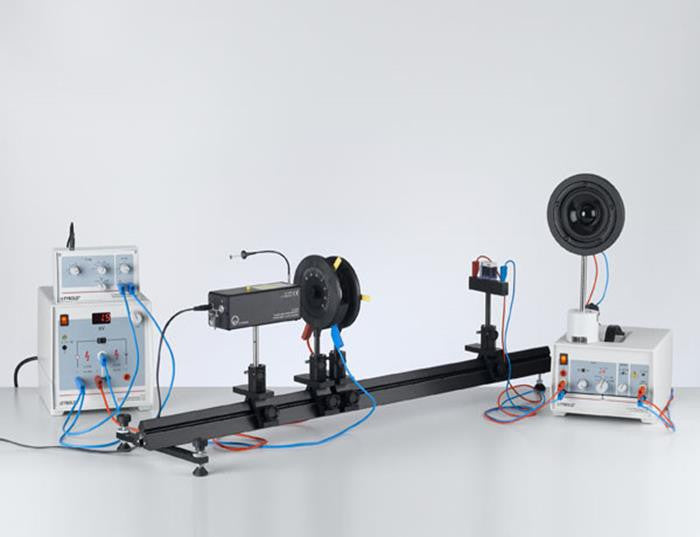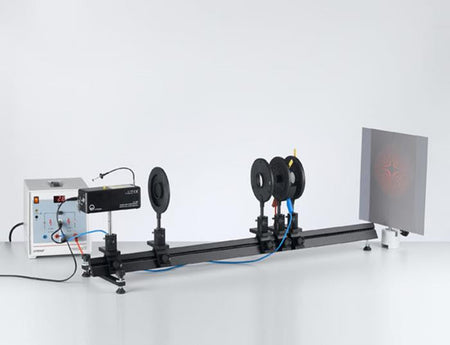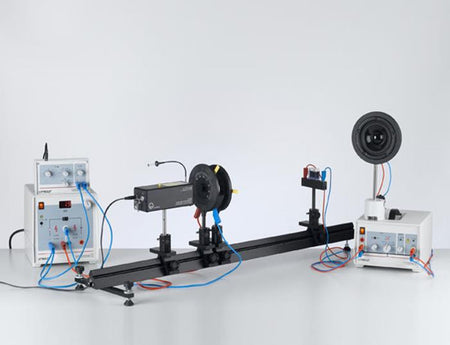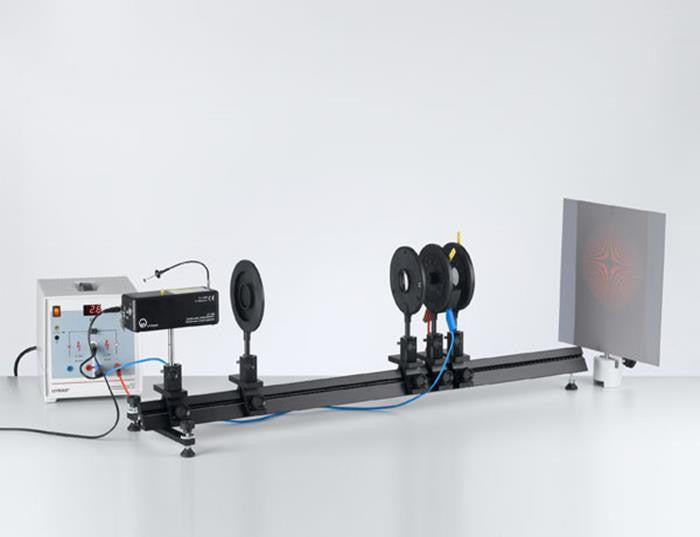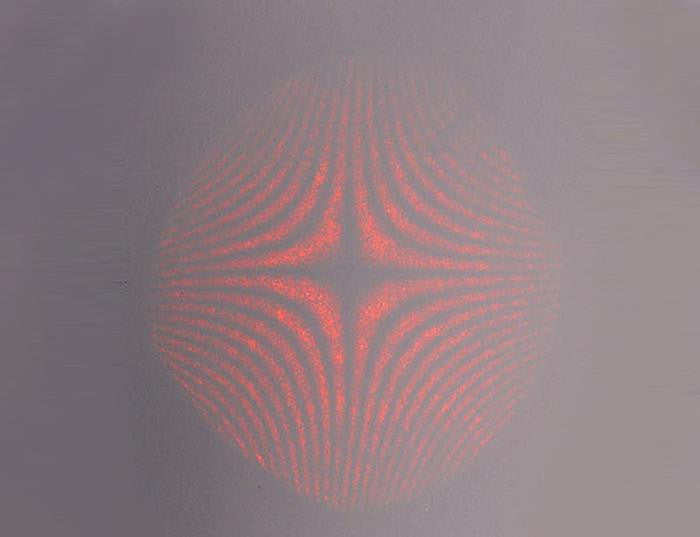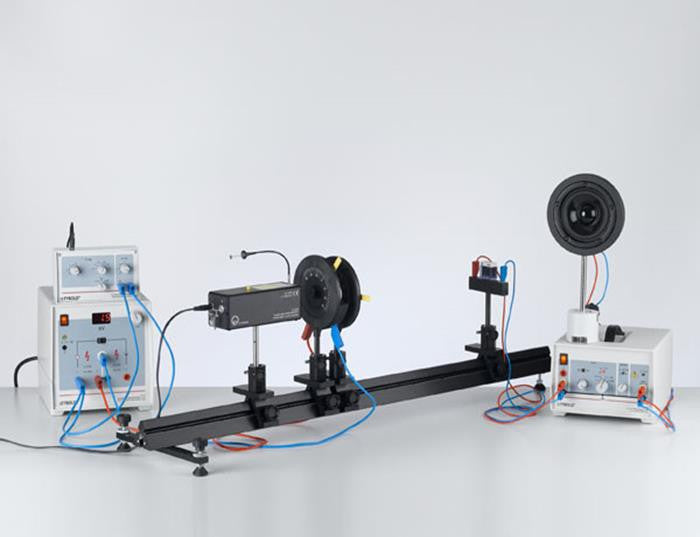P5.4.5.1 Pockels Effect in a Conoscopic Beam Path
Regular price
$11,865.00
Couldn't load pickup availability
P5.4.5.1 Pockels Effect in a Conoscopic Beam Path
The experiment P5.4.5.1 demonstrates the Pockels effect in a lithium niobate crystal placed in a conoscopic beam path. The crystal is illuminated with a divergent, linearly polarized light beam, and the transmitted light is viewed behind a perpendicular analyzer. The optical axis of the crystal, which is birefringent even when no electric field is applied, is parallel to the incident and exit surfaces; as a result, the interference pattern consists of two sets of hyperbolas which are rotated 90° with respect to each other. The bright lines of the interference pattern are due to light rays for which the difference Δ between the optical paths of the extraordinary and ordinary rays is an integral multiple of the wavelength λ. The Pockels effect alters the difference of the main refractive indices, no - ne, and consequently the position of the interference lines. When the so-called half-wave voltage Uλ is applied, Δ changes by one half wavelength. The dark interference lines move to the position of the bright lines, and vice versa. The process is repeated each time the voltage is increased by Uλ.COMPONENTS OF EQUIPMENT SETS:
| 1 | 472 90 | Pockels cell |
| 1 | 521 70 | High-voltage power supply, 10 kV |
| 1 | 471 830 | He-Ne Laser, linearly polarised |
| 1 | 460 01 | Lens in frame, f=5 mm |
| 1 | 460 02 | Lens in frame, f=50 mm |
| 1 | 472 401 | Polarisation filter |
| 1 | 460 32 | Optical bench with standardised profile, 1 m |
| 5 | 460 370 | Optics rider, 60/34 |
| 1 | 441 53 | Screen, translucent |
| 1 | 300 11 | Saddle base |
| 1 | 500 604 | Safety connecting lead, 10 cm, black |
| 1 | 500 641 | Safety connecting lead, 100 cm, red |
| 1 | 500 642 | Safety connecting lead, 100 cm, blue |
EXPERIMENT INSTRUCTIONS CLICK HERE


